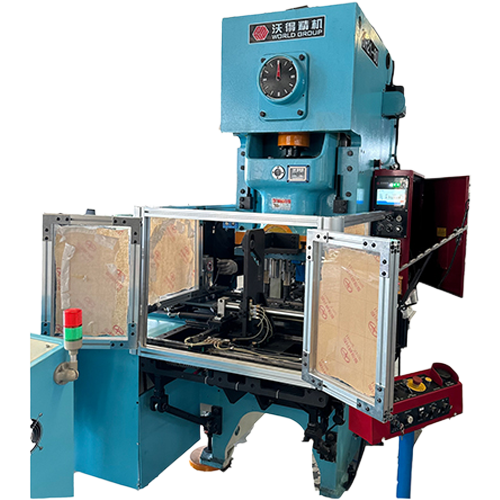In a pneumatic four-wheel tank sealing machine, what is the function of the sealing head?
The sealing head is a key component of the pneumatic four-wheel tank sealing machine. Its function is to form a sealed state between the tank cover and the tank body. It plays a vital role in ensuring the integrity, safety and freshness of packaged products.
Contact points with the tank and lid: The sealing head acts as a contact point between the tank and the lid during the sealing process. On passing the sealing means, it cooperates with the tank and the lid to form a secure seal by applying pressure. The design and construction of the sealing head is essential to achieve a stable and reliable seal of tanks of different sizes and materials.
Roller or wheel configuration: The sealing head is usually composed of multiple sets of rollers or wheels arranged in a specific configuration to press and seal the lid on the tank. These rollers or wheels exert pressure on the lid, causing it to bend at the flange of the tank and form a tight seal. The arrangement and orientation of the rollers/wheels may vary depending on the design of the sealing head and the sealing requirements of the application.
Adjustability for different jar sizes: Many pneumatic four-wheel jar mouth sealers are equipped with adjustable sealing heads that can accommodate different jar sizes and lid types. The operator can easily change the settings of the sealing head to suit the size of the can being processed, thus ensuring compatibility with various packaging requirements.
Precision and consistency: The sealing head must remain in precise and stable operation in order to create a high-quality seal on every can. Proper alignment and calibration of the sealing head is essential to ensure uniform pressure distribution and seal integrity over the entire circumference of the can. Deviations or inconsistencies in the operation of the sealing head can lead to reduced seal quality and product quality issues.
Sealing Pressure Control: The sealing head applies controlled pressure to the cover, resulting in a seal that can be achieved. A pneumatic cylinder or actuator connected to the sealing head provides the necessary pressure during the sealing process. The sealing pressure can be adjusted to the requirements of the packaging application to ensure that the seal is neither too loose nor too tight.
Sealing speed and efficiency: In addition to pressure control, the sealing head also affects the speed and efficiency of the sealing process. The design of the sealing head, including the number and arrangement of rollers/wheels, determines the degree of sealing speed that can be achieved without reducing the sealing quality. A properly designed sealing head can greatly shorten cycle time and improve production efficiency, thereby improving overall efficiency and productivity.
Compatibility with lid types: The sealing head must be compatible with a variety of lid types, including standard metal lids, easy-open lids, and composite lids. Different cap materials and designs may require specific adjustments or configurations of the sealing head to ensure good sealing performance. Compatibility with a wide range of lid types increases the versatility of sealing machines and gives them wider applicability across different industries and product categories.
Recommended Products


 EN
EN
 中文简体
中文简体 English
English













